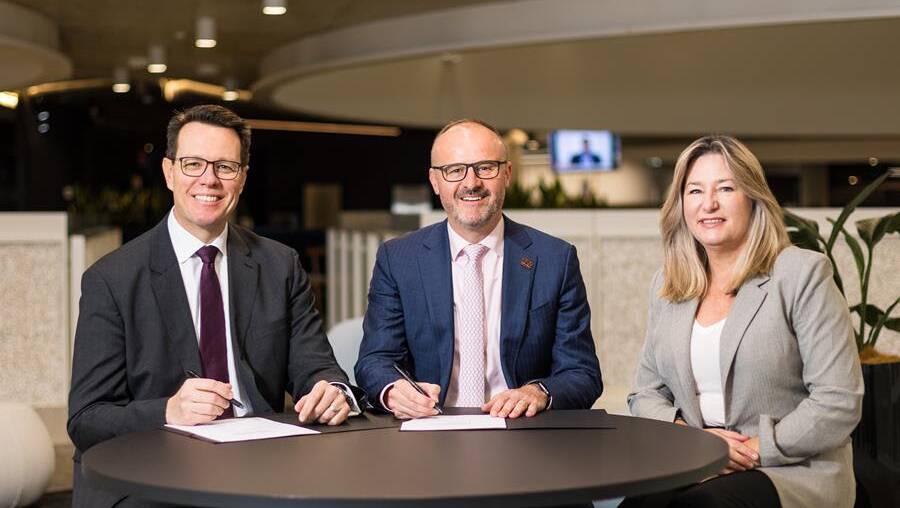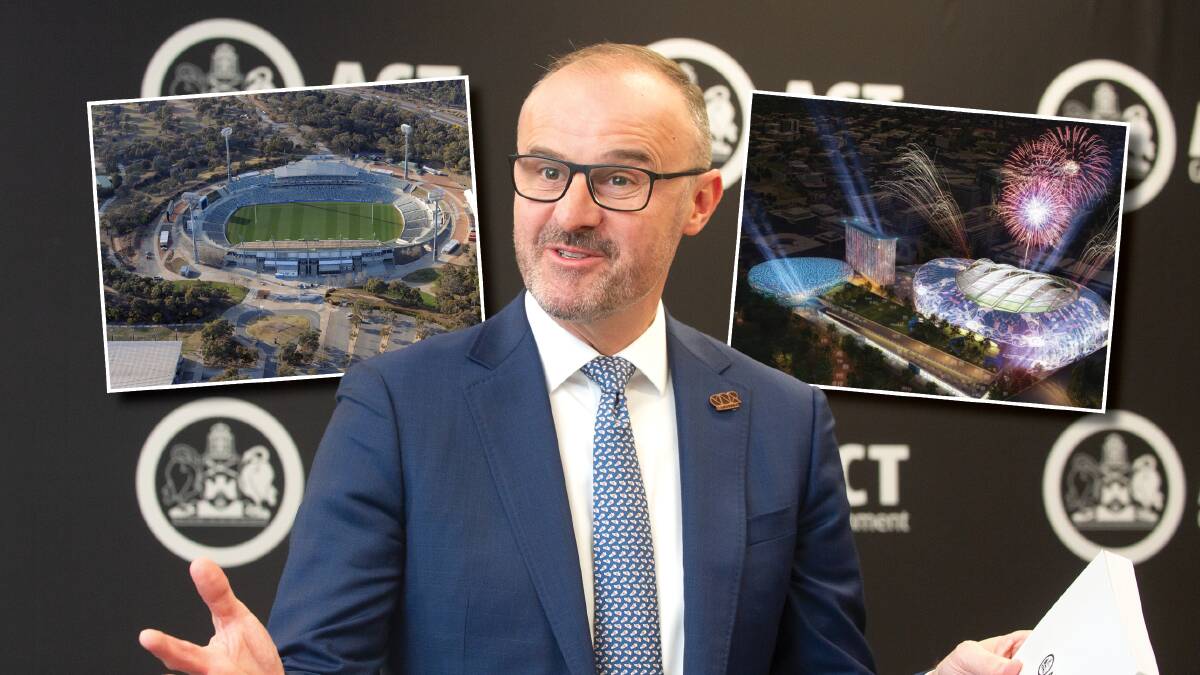The ACT government wants to strike a three-way investment partnership to revitalise the AIS, revealing its vision for a "northside sport and health precinct" to ensure the facility remains in Canberra.
Subscribe now for unlimited access.
$0/
(min cost $0)
or signup to continue reading
In a seven-page submission to a federal review of the AIS and its location, the government argued the AIS needed to stay in Canberra as the most "cost-efficient" way to impact athlete performance for the Brisbane Olympic and Paralympic Games in 2032.
It also called for at least a $200 million investment for the existing 64-hectare site at Bruce, and reiterated its intention to build a new stadium to help reinvigorate the AIS as a sporting hub.
The government's plan was sent to an independent review panel, which was set up by the Albanese government to address years of neglect and under-investment.
The review will examine the future of the AIS, the funding needed to upgrade existing facilities and the prospect of a $1 billion relocation to south-east Queensland.
The review panel has met with Australian Sports Commission and ACT government staff in recent weeks, with a report to be presented to Infrastructure Minister Catherine King and Sport Minister Anika Wells by the end of the year.
The ACT government has been the loudest voice in the room, with all submissions due to the panel by Tuesday night.

In an attempt to stave off a poaching raid by Queensland, the ACT government has created a masterplan for Bruce, which includes the AIS, a stadium revamp, light-rail extension, hospital upgrades and education facilities.
But to achieve its vision it wants to jointly fund the project with the federal government and University of Canberra.
"The AIS is pivotal to the development of Canberra's northside sport and health precinct, also encompassing the University of Canberra, Canberra Institute of Technology Bruce, UC Hospital and North Canberra Hospital," the government's submission said.
"This corridor is planned to be a dynamic precinct with one focus being on sport, including sport experience, sport science, sport participation and sport innovation.
"The Belconnen District Strategy supports this vision and sets up the precinct around Bruce to connect sport with community, businesses, research, education, leisure and entertainment, reinforcing the area as an activated hub for high performance sport and innovation.
"Coordinated investment in this precinct by the ACT government, University of Canberra and the Australian government has the potential to enhance Australia's global reputation as a leader in sport, sports science and performance. A precinct of this nature would not be possible elsewhere in Australia."
MORE CANBERRA SPORT
Erin Flaherty and Robyn Smith will oversee the review in what looms as the most significant development for the AIS since the residential scholarship program was disbanded a decade ago.
The review will seek to inform government how "best to invest in sports facilities to ensure the AIS remains fit-for-purpose in supporting high performance athletes", and the facilities required in the build up to the 2032 home Games.
There have been rumblings for several years about relocating the AIS to Queensland to take advantage of a more favourable climate, but the Queensland government opted against making a submission to the panel.
It puts Canberra in a strong position to retain the AIS, which will accelerate ACT Chief Minister Andrew Barr's hopes of building a new stadium, or refurbishing the existing Canberra Stadium, within 10 years.
The government has already committed to a $1 billion northside hospital to be built on the Calvary site.
"A number of medical and sports medicine start-ups are emerging and the ACT government's commitment through the development of Canberra's northside sport and health precinct will support an environment to foster innovation and growth of these start-ups in close proximity to the AIS," the submission said.
The government signed a memorandum of understanding with the Australian Sports Commission this year to jointly form a plan to revitalise the AIS, including reopening the AIS Arena, the stadium plan and the potential of on-site hotels, restaurants, cafes and bars.

The submission to the AIS panel said a new stadium precinct would create a better fan experience and drive economic activity, "enhance the live entertainment reputation of Canberra" and be capable of hosting large and small-scale events.
"The ACT government strongly believes that the best option for the future of AIS infrastructure is investment in the facilities in Canberra which have served the nation's sporting elite for forty years," the submission said.
"The 2018 Masterplan commissioned by the former Commonwealth Government found that the AIS campus could be improved at a cost of $200 million. Due to cost escalation in the construction sector over the past five years, this number is likely to be somewhat higher today.
"The ACT government advocates for investment of at least this amount in the AIS Campus at Bruce to bring it up to standard prior to the 2032 Olympics."
Our journalists work hard to provide local, up-to-date news to the community. This is how you can continue to access our trusted content:
- Bookmark canberratimes.com.au
- Download our app
- Make sure you are signed up for our breaking and regular headlines newsletters
- Follow us on Twitter
- Follow us on Instagram


